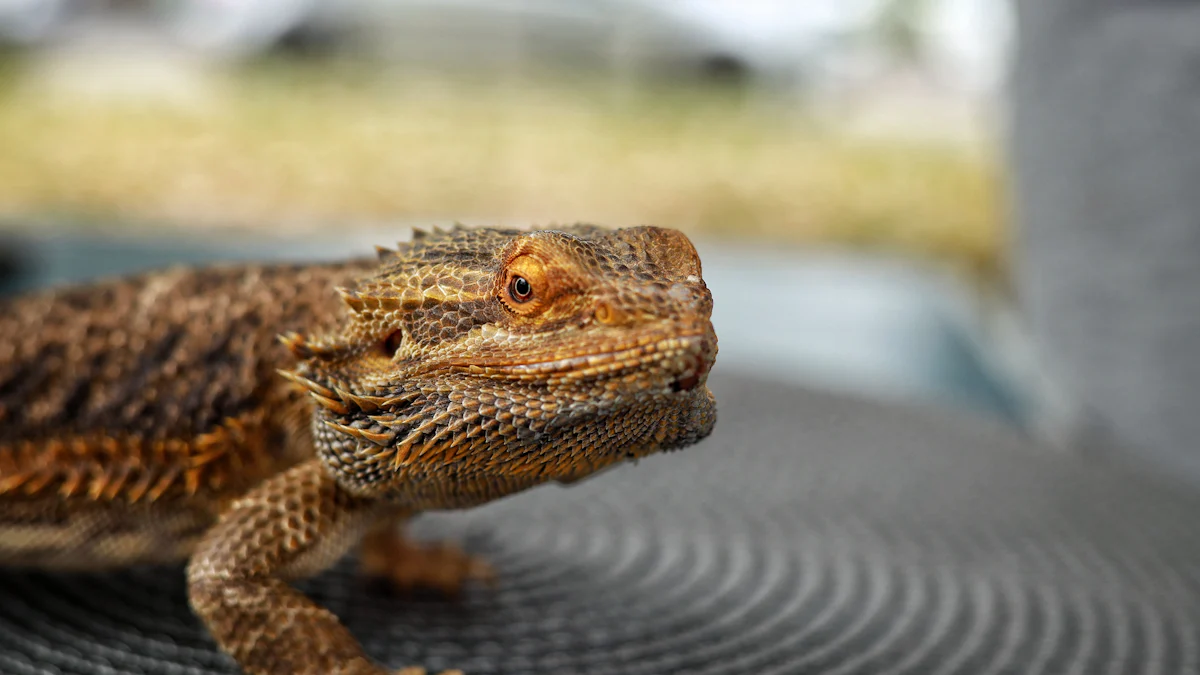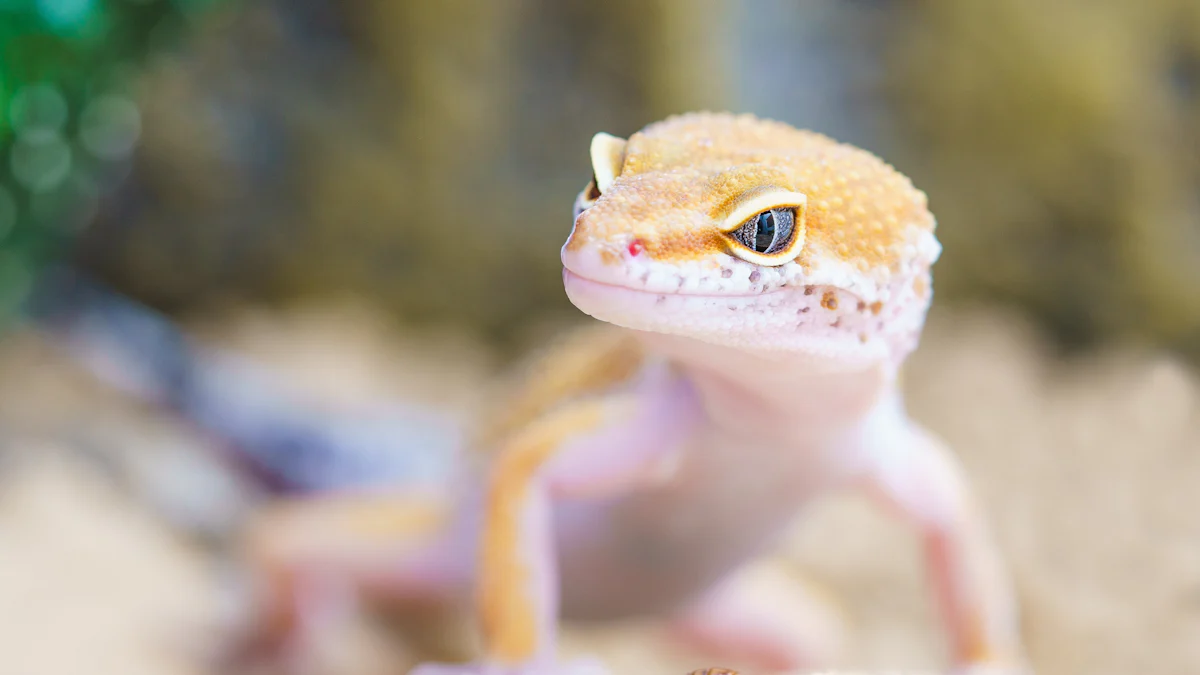
Dried mealworms are a 100% natural source of protein, vitamins, and minerals, making them ideal for reptiles like lizards and turtles. Packed with amino acids and essential fatty acids, they support muscle growth, skin health, and energy. Their convenience and long shelf life make dried mealworms for reptiles a practical and nutritious choice.
Key Takeaways
- Dried mealworms are 52% protein, which helps reptiles grow strong.
- Feed dried mealworms 2-3 times weekly with veggies and bugs.
- Soak them in warm water first to make them easier to eat.
Nutritional Benefits of Dried Mealworms for Reptiles

Protein for Growth and Muscle Maintenance
Protein is a cornerstone of any reptile’s diet, and dried mealworms deliver it in abundance. With a protein content of 52%, they surpass other common reptile foods like black soldier fly larvae, which contain 40-45%.
| Food Item | Protein Content (%) |
|---|---|
| Dried Mealworms | 52 |
| Black Soldier Fly Larvae | 40-45 |
This high protein level supports muscle development, tissue repair, and overall health. Reptiles rely on protein to maintain muscle mass and stay active. Additionally, dried mealworms provide essential amino acids that contribute to their growth and vitality. Including them in a reptile’s diet ensures they get the nutrients needed for strong muscles and a healthy body.
Healthy Fats for Energy and Metabolic Support
Dried mealworms are packed with healthy fats, including omega-3 and omega-6 fatty acids. These fats play a vital role in boosting energy levels and supporting metabolic functions. They also enhance skin and scale health, improve brain function, and strengthen the immune system. For reptiles, these benefits translate into better overall well-being and a more active lifestyle. By incorporating dried mealworms into their diet, owners can provide their reptiles with a reliable source of energy and essential nutrients.
Vitamins and Minerals for Immune and Bone Health
Dried mealworms are rich in vitamins and minerals that are crucial for reptiles’ immune systems and bone health. They contain calcium, phosphorus, and vitamin D, which are essential for strong bones and preventing metabolic bone disease.
| Vitamin/Mineral | Benefit |
|---|---|
| Calcium | Crucial for bone health and metabolic functions |
| Phosphorus | Supports muscle function and bone health |
| Vitamin D | Vital for calcium absorption |
Additionally, dried mealworms offer B vitamins, which aid in growth and metabolism, and vitamin A, which supports vision and immune function. These nutrients make dried mealworms for reptiles a valuable addition to their diet, ensuring they stay healthy and thrive.
Feeding Guidelines for Dried Mealworms
How to Feed Dried Mealworms Safely
Feeding dried mealworms to reptiles requires a few precautions to ensure their safety. First, always choose high-quality mealworms free from additives or preservatives. Soaking them in warm water for 20-30 minutes softens their texture, making them easier to digest. Adding vitamin supplements to the soaking water can boost their nutritional value.
To prevent health issues, dust the mealworms with calcium, phosphorus, and vitamin D3 supplements before feeding. This step is especially important for reptiles prone to metabolic bone disease. Mixing mealworms with other feeder insects like crickets ensures a varied diet. Owners should also monitor their reptiles for signs of impaction, as the hard exoskeletons of mealworms can sometimes cause digestive problems. Feeding freshly molted mealworms can reduce this risk.
Portion Sizes and Feeding Frequency
Portion sizes depend on the reptile’s species, size, and dietary needs. For smaller reptiles, a few mealworms per feeding session are sufficient. Larger reptiles may require more, but overfeeding should be avoided to prevent obesity. Feeding dried mealworms 2-3 times a week as a supplement to their main diet works well for most reptiles. Always observe your pet’s behavior and adjust portions accordingly.
Combining Dried Mealworms with Other Foods
Dried mealworms for reptiles should not be their sole food source. A balanced diet includes fresh vegetables, fruits, and live prey like waxworms or crickets. This variety ensures reptiles receive all the nutrients they need. For example:
| Food Source | Nutritional Benefits |
|---|---|
| Dried Mealworms | High in protein and fat, but not sufficient alone. |
| Greens | Provide essential vitamins and minerals. |
| Fruits | Offer hydration and additional nutrients. |
| Other Insects | Supply varied protein sources and nutrients. |
Combining these foods prevents dietary monotony and supports overall health. Reptiles thrive when their meals are diverse and nutritionally complete.
Potential Risks and Limitations of Dried Mealworms
Risks of Overfeeding and Obesity
Overfeeding dried mealworms can lead to serious health problems in reptiles. These insects are calorie-dense, and excessive consumption may result in obesity. Signs of obesity include lethargy, picky eating habits, and visible fat deposits. Leopard geckos, for example, are particularly prone to weight gain when fed too many mealworms. An improper diet high in fats can cause severe health issues, such as organ damage or reduced mobility. To avoid these risks, owners should monitor portion sizes and ensure mealworms are part of a balanced diet.
Addressing Hydration Concerns
Dried mealworms lack moisture, which can pose hydration challenges for reptiles. Soaking them in warm water for 10-15 minutes helps rehydrate the mealworms, restoring their natural texture. This process makes them easier to digest and reduces the risk of dehydration. Rehydrated mealworms also become more flavorful and aromatic, which can entice picky eaters. This simple step ensures reptiles stay hydrated, especially during dry seasons or when water is scarce.
Suitability for Different Reptile Species
Dried mealworms are a nutritious option for many insectivorous reptiles. Lizards like bearded dragons, leopard geckos, and crested geckos benefit from their high protein and fat content. Turtles, including red-eared sliders and painted turtles, can also enjoy mealworms as part of their diet. These reptiles thrive on the energy and nutrients mealworms provide. However, owners should combine them with other foods to meet all dietary needs and prevent nutritional imbalances.
Dried mealworms for reptiles are a fantastic addition to their diet. They’re packed with protein, healthy fats, and essential vitamins. Their long shelf life and ease of use make them a convenient choice for pet owners. By feeding them in moderation and combining them with other foods, reptiles can enjoy a balanced, nutritious diet. 🦎
FAQ
Can dried mealworms be fed to pets other than reptiles?
Yes! Dried mealworms are suitable for birds, fish, and even poultry. They’re a versatile treat packed with protein, vitamins, and minerals for various pets.
Should dried mealworms be soaked before feeding?
Soaking dried mealworms in warm water softens them, making them easier to digest. This step also helps hydrate reptiles and enhances the mealworms’ flavor for picky eaters.
How often should dried mealworms be fed?
Feed dried mealworms 2-3 times a week as a supplement. Combine them with other foods like vegetables or live insects to ensure a balanced diet for your pet.


